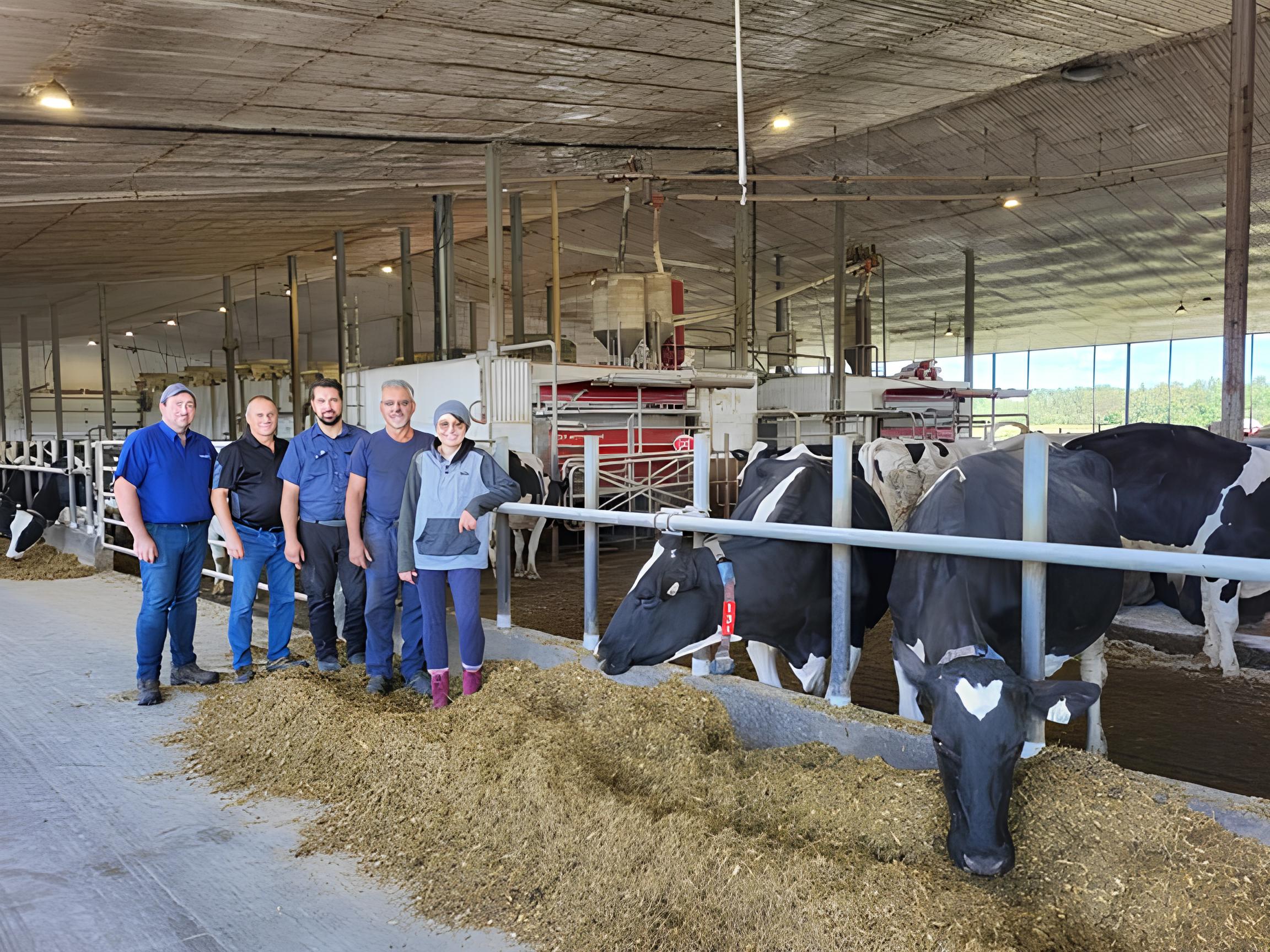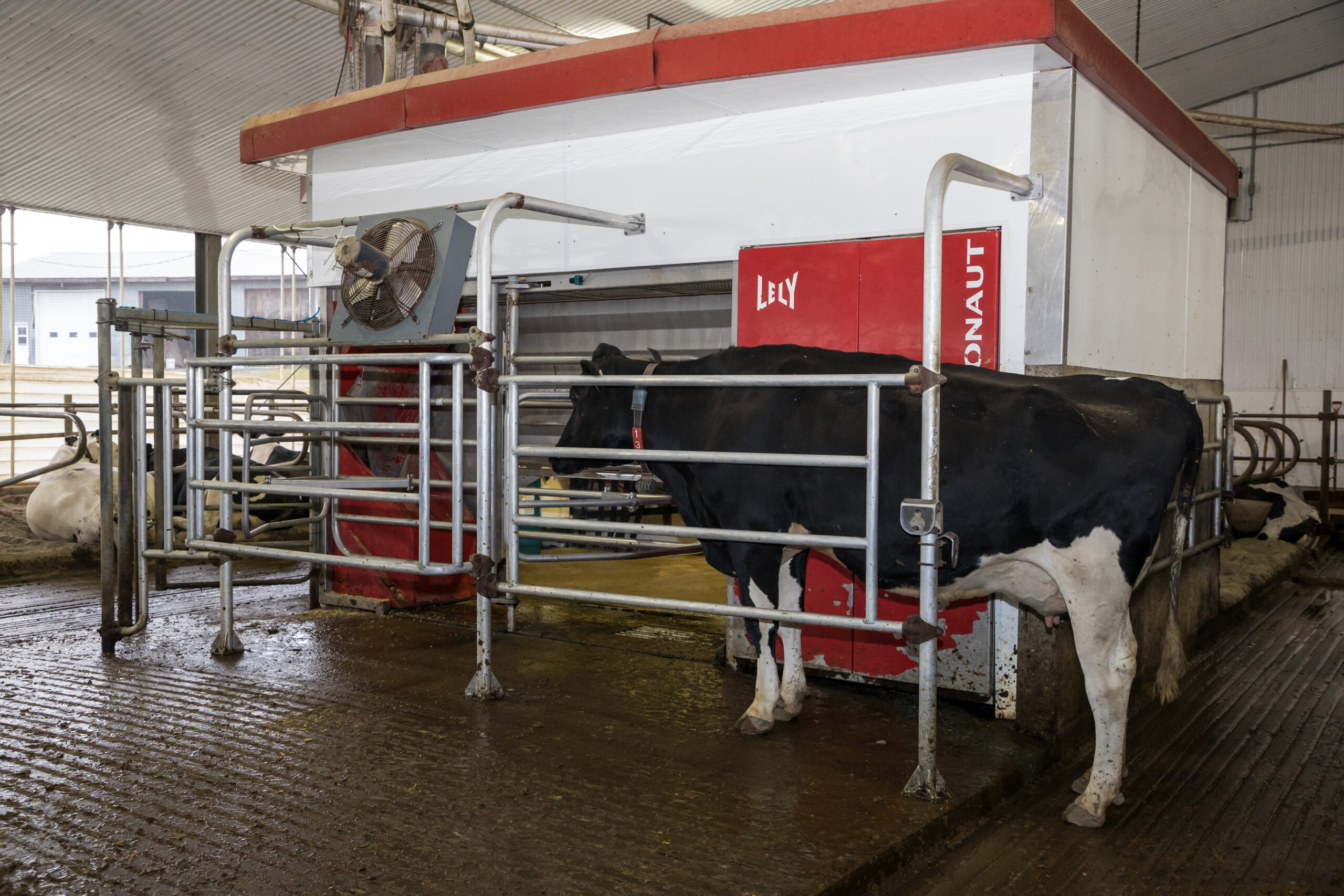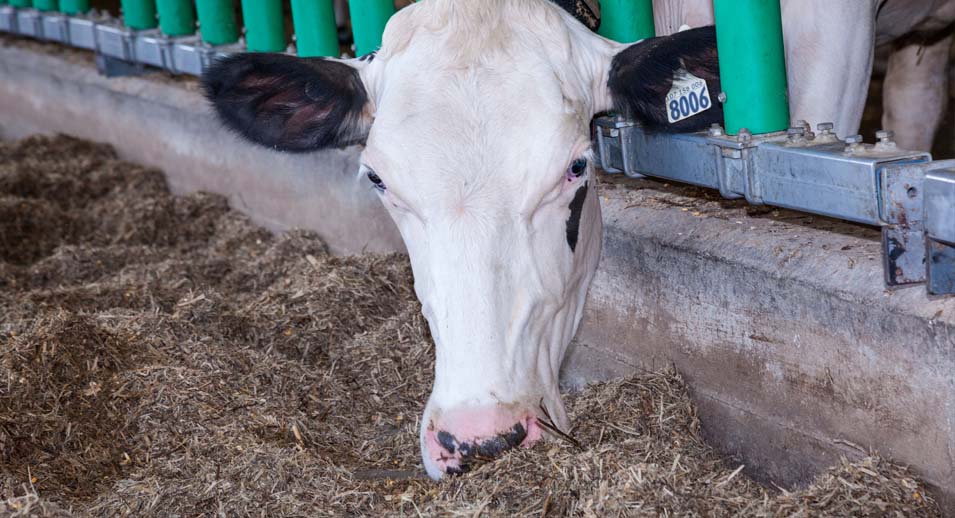Are there any advantages to isolating first lactation cows in a robotic milking group?
- April 30, 2019
What is the rule for first lactation cows in robotic milking? Do I group them with adult cows or should I isolate them into a particular group? It is known that dry matter consumption is lower in first lactation cows, that the milk peak is later in lactation and also that this group has more dominated cows. Is this enough to justify housing them in a different group? This is the question that the Spanish researcher Alex Bach and his team wanted to answer in a study published in 2006.
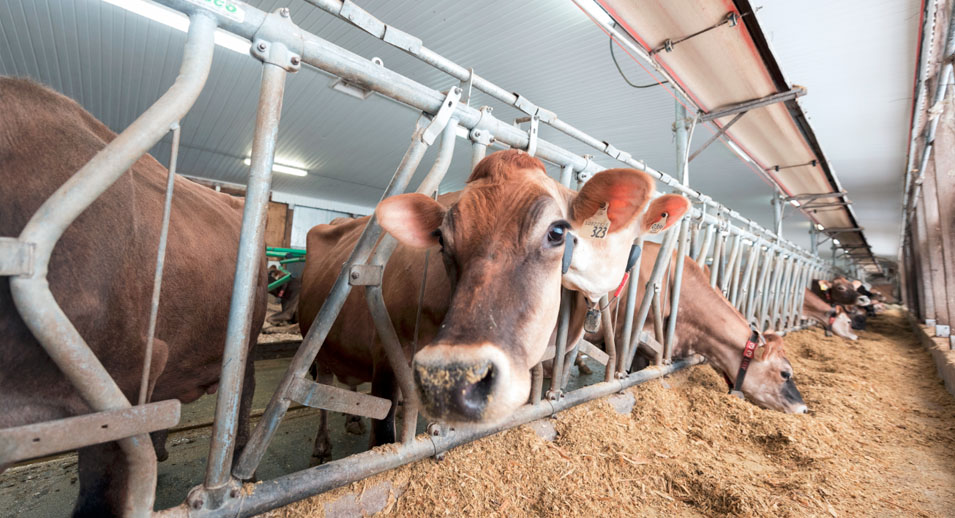
The same ration for a group of isolated first lactation cows and a group including multiparous cows
In two symmetrical parks, we housed an isolated group of first lactation animals and a group composed of 30% first lactation animals and 70% multiparous animals. The first lactations’ were distributed in each of the pens, according to the days in milk and production. The same ration was distributed in both pens and the cows received an average of three kilograms of concentrate in the robot. During this ten-month experiment, a total of 90 primiparous and 52 multiparous cows were used. All cows had free access (traffic) to the milking robot.
More shorter meals in the isolated first lactation cow group
According to the results presented in Table 1, although the cows in the isolated primiparous group consumed slightly less of the ration, they tended to eat more and in shorter meals. The ingestion rate varied little between groups. The authors of the study suggest that a greater number of meals can affect the production of volatile fatty acids – acetate among others – and this would be related to the fat test which was higher in the isolated primiparous group.
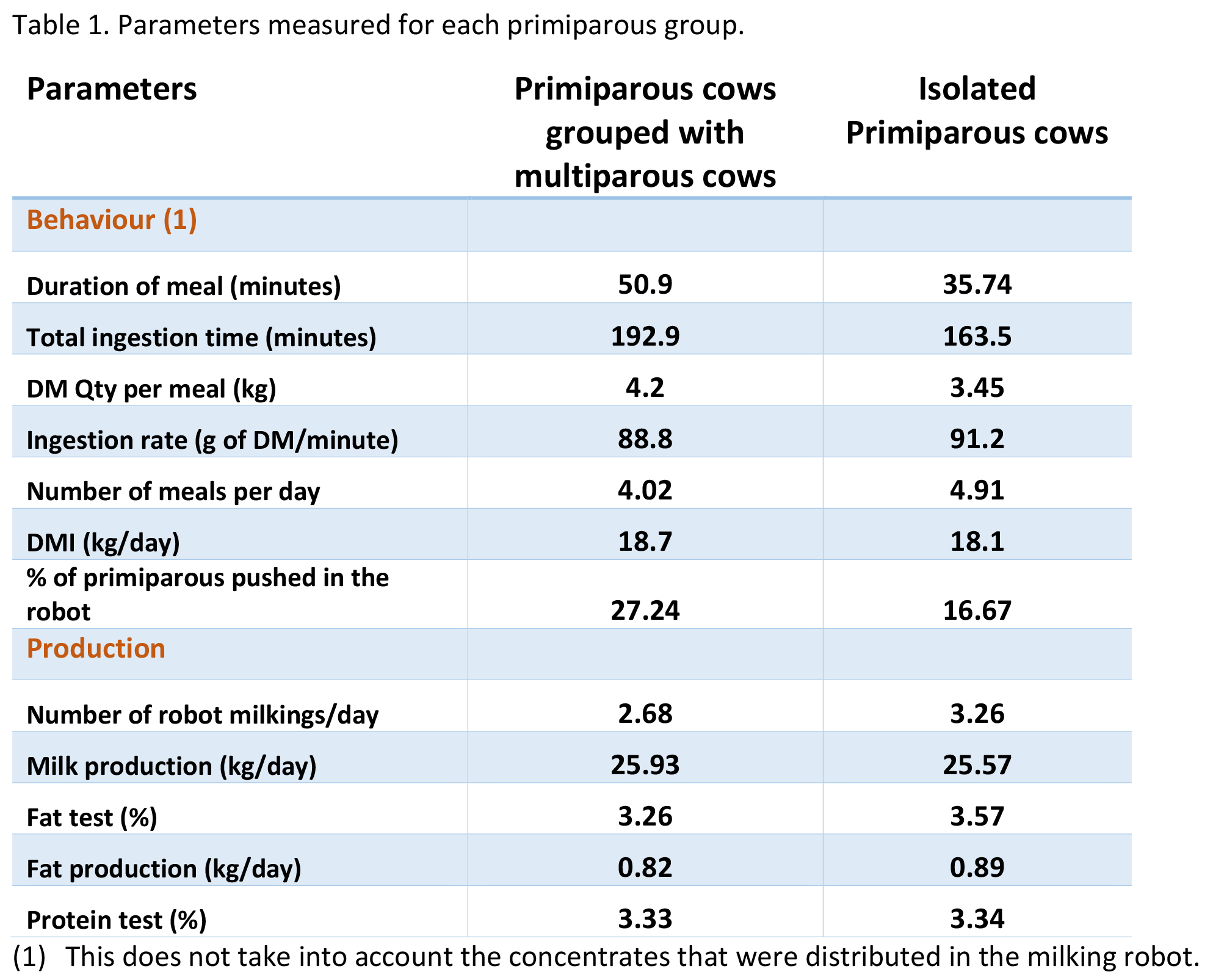
Increase in the number of milkings in the isolated first lactation cow group
There is also a significant difference in the number of milkings in Table 1 and Graph 1. The rapid increase in the number of milkings in the group of isolated primiparous cows is exactly the type of behaviour we would like, since it can promote better milk production. The greater the number of milkings, the less food left over. As can also be seen in the table, a higher number of milkings is linked to fewer cows being pushed by the robot, which increases work efficiency.
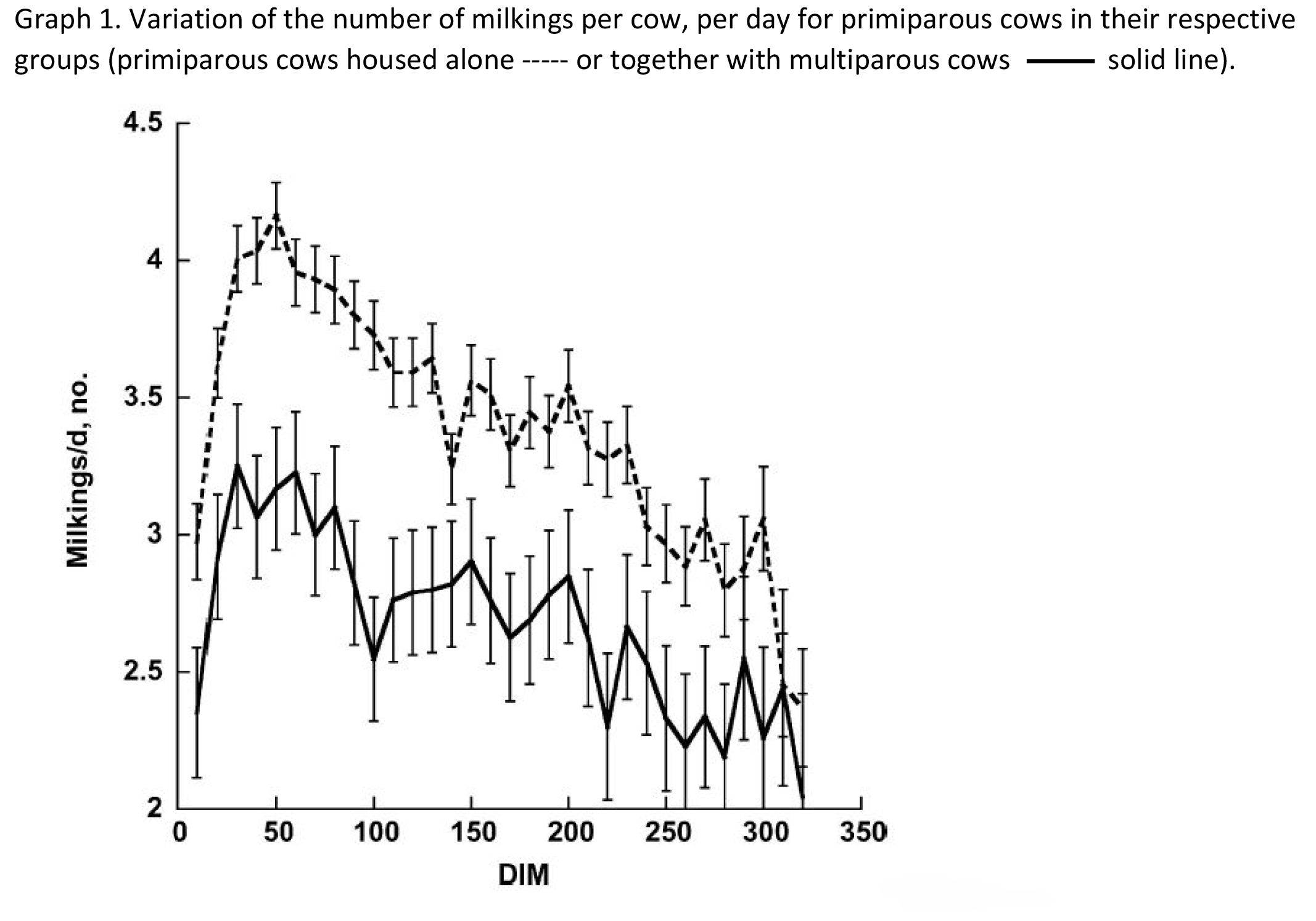
Positive effect on weight gain and feed conversion
The impact on milk production is not obvious at first glance, but there is an advantage, in terms of kilos of fat, for isolated primiparous cows. However, as can be seen in Graph 2, the energy seems to have been used a little more effectively to minimize weight loss and allow a faster recovery in body weight in isolated primiparous cows. One can presume that the reproductive performance has also been better, but this remains to be verified. Since milk production is similar and consumption was lower in the isolated primiparous group, feed conversion was also better for this group.
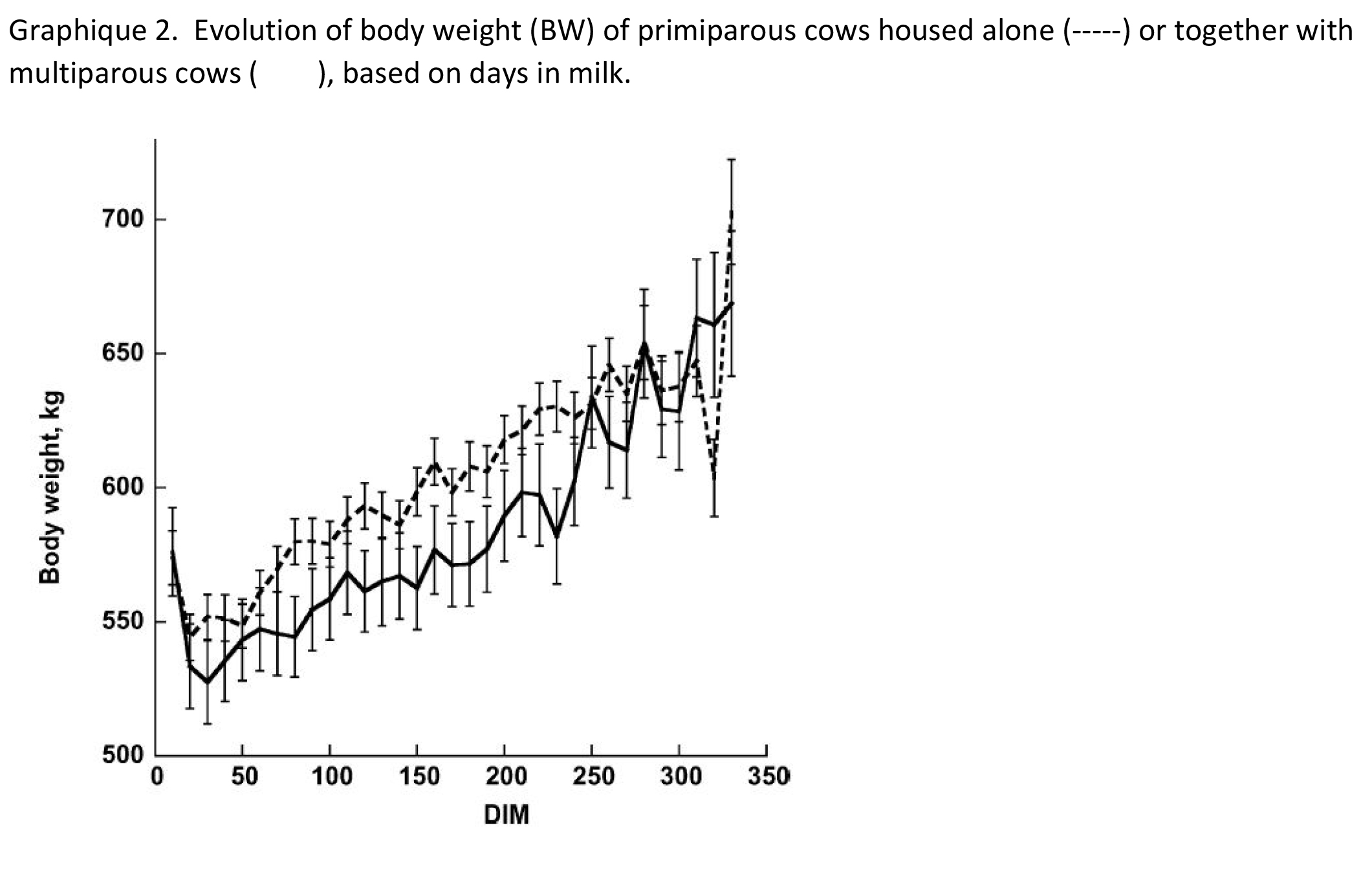
Yes, there are advantages to isolating first lactation cows in a group
On farms equipped with three or more milking robots, there seems to be enough arguments in favor of grouping first lactation cows together with one milking robot and to put the other cows in a single park with two robots.




